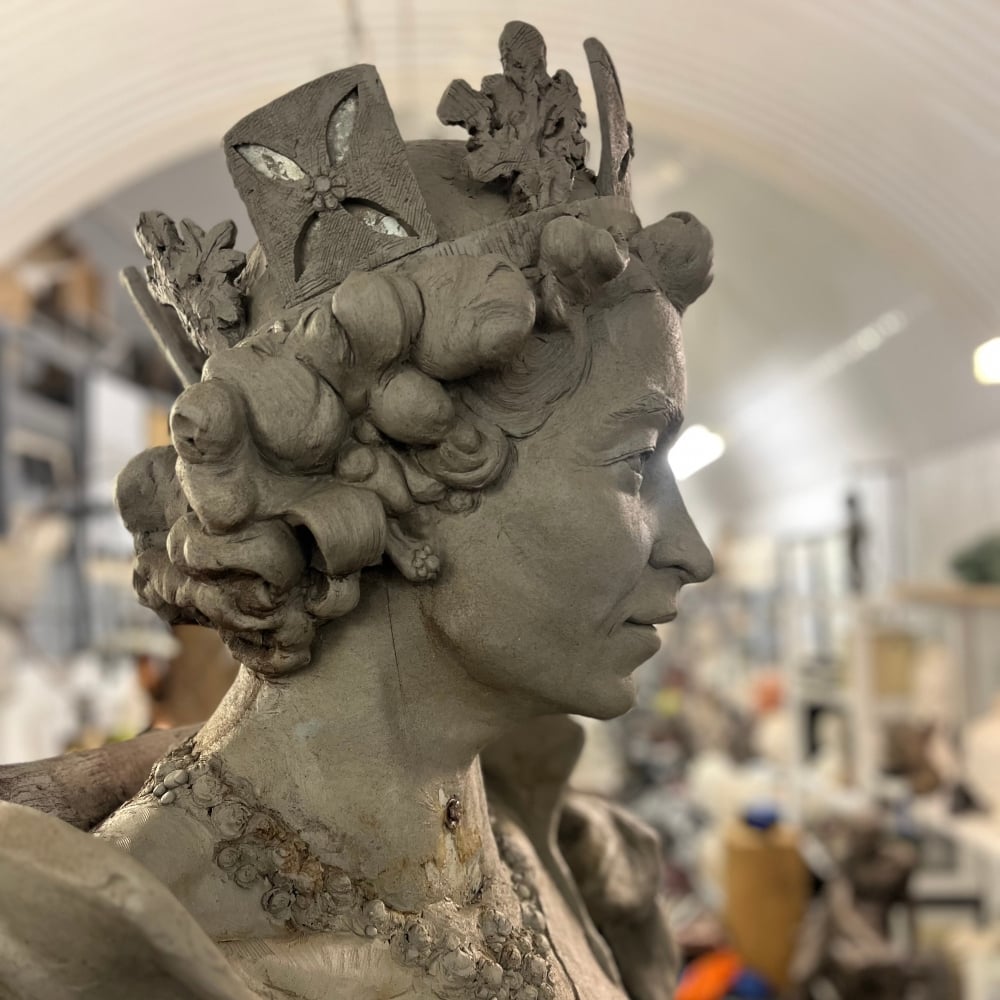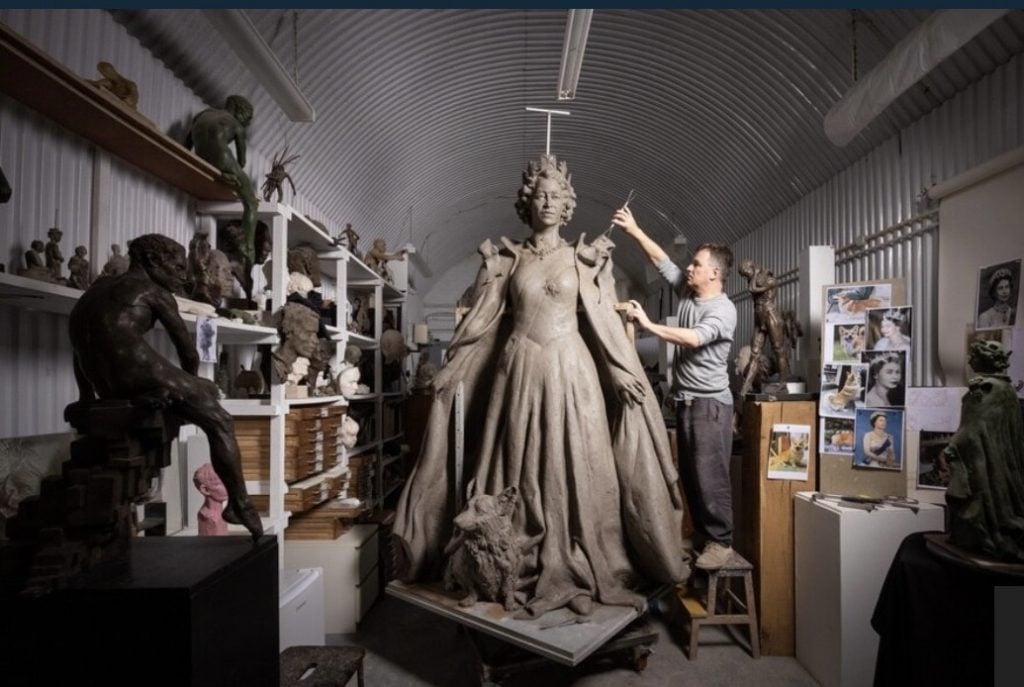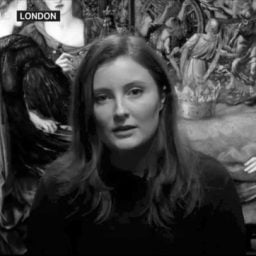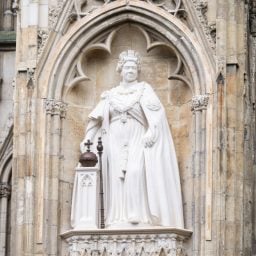A new monument in memory of Queen Elizabeth II will be installed outside a public library in the town of Oakham in Rutland, England. The portrait by British sculptor Hywel Brân Pratley presents a majestic vision of a young queen in state robes with her signature corgis at her feet.
Much larger than life, the seven-foot-tall statue was made using 1,764 pounds of clay, according to the Telegraph. It is 51-year-old Pratley’s first public sculpture in Britain, and is the country’s first known official memorial to the late queen, who died on September 8 last year.
Another statue, carved from three tons of limestone by the local stonemason Richard Bossons, was installed on the facade of York Minster in November by King Charles III, but this portrait had originally been intended to celebrate the queen’s Platinum Jubilee, and was finished a month before the long-reigning monarch’s death. A second statue was erected in 2002 in Windsor Great Park to celebrate the queen’s Golden Jubilee in 2002.
The new statue was commissioned by Sarah Furness, the Lord-Lieutenant of Rutland, the smallest county in England that lies north of London in the East Midlands. The design, which immortalizes the queen as she was in the 1950s and ’60s, was agreed on in March and £125,000 ($160,000) of public funding was secured for the project. When the work is erected outside the Oakham library, it will include a stone bench at the base of the plinth.

The U.K.’s first official memorial statue of Queen Elizabeth II by Hywel Brân Pratley. Photo courtesy of the artist.
“I’ve got my inspiration wall and they’re all pictures of the beautiful young Queen Elizabeth,” Pratley told the Telegraph. “Selecting this view of a cheekbone and that view of an eyebrow has been great for me, I’ve enjoyed that very much.”
“A very important phase in her life was when her children were young and she was such a powerful force in the Commonwealth; so vibrant and beautiful and going around the world,” he added. “Her reign was a period of British history during which she represented something so hopeful—and that’s what people would like to be looking at as they gaze upon their statute.”
Shortly after the queen’s death last fall, a debate arose among royal officials over where to erect a permanent memorial. The suggestion of the Fourth Plinth in Trafalgar Square in London was met with contention, as the once-vacant spot has been reserved for major public art commissions since 1999. It has featured works by Mark Wallinger, Rachel Whiteread, Marc Quinn, Antony Gormley, Yinka Shonibare, and David Shrigley.










